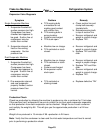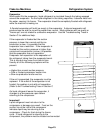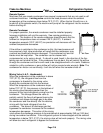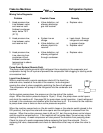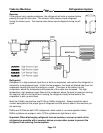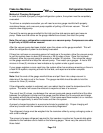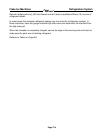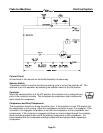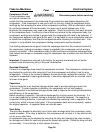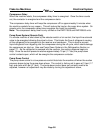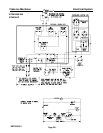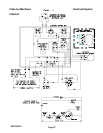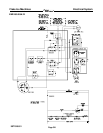
Flake Ice Machines Electrical System
Page G2
Compressor Check
If the compressor uses
an internal overload, be
certain that the compressor has cooled and the overload has reset before diagnosing the
compressor. If the compressor is cool and is still not running, check the compressor motor
windings by first removing the wires at the compressor terminals. With an ohmmeter, check
for continuity between all three terminals, if an open circuit exists between any of the
terminals, the compressor may need to be replaced. Check for continuity from each terminal
to the compressor body, if continuity is found from any terminal to the compressor body, the
compressor windings are shorted to ground and the compressor will need to be replaced. If
the compressor appears to be good at this point, it is advisable to use a compressor analyzer
to isolate the compressor from the start components while checking for a locked rotor. If an
analyzer is not available, the compressor starting components must be checked.
Disconnect power before servicin
g
If all starting components are good, check the amperage draw from the common terminal of
the compressor, making sure proper voltage is supplied to the compressor and all wiring is
properly connected. If the compressor does not start and there is excessive amperage draw,
(see locked rotor amps on compressor tag) the compressor has a locked rotor and should be
replaced.
Important: Compressors returned to the factory for warranty are tested and will not be
covered under the warranty policy if they are not defective.
Overload (External)
If there is no amperage draw check the compressor overload. The compressor overload can
be checked for continuity after removing it from the compressor and letting it cool to room
temperature. If there is no continuity between the two terminals, replace the overload. If the
overload is suspected of opening prematurely, it should be replaced with an overload, which
is known to be good.
Capacitors
The start capacitor is an electrical storage device used to provide starting torque to the
compressor. If a start capacitor is defective, the compressor will not start properly.
The run capacitor is an electrical storage device used to improve the running characteristics
and efficiency of the compressor.
Before checking a capacitor, it should be discharged by shorting across the terminals. If a
run or start capacitor is cracked, leaking or bulging it should be replaced. If a capacitor is
suspected of being defective, it can easily be checked by replacing it with a capacitor of the
correct size, which is known to be good. If the compressor starts and runs properly, replace
the original capacitor. A capacitor tester can also be used.
Start Relay
The start relay breaks the electrical circuit to the start windings when the compressor motor
speed increases. If the relay is defective, the compressor will not start or it may start but will
run for a very short time.
A compressor relay can be checked by removing the relay and checking the relay contacts
for damage and check for continuity across the closed relay points. Check the relay coil with
an ohmmeter. If no continuity is read, replace the relay.



